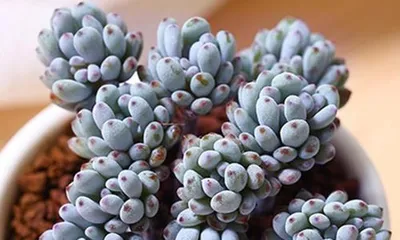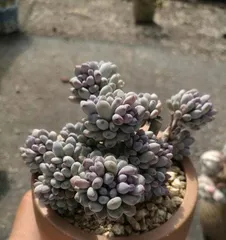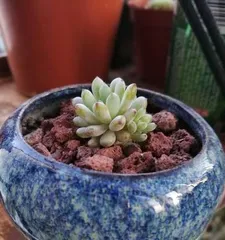Blue Bean tea, also known as Guangdong tea, originates from Meizhou City, Guangdong Province, and is a type of tea with a rich historical and cultural heritage. Favored by consumers for its unique floral aroma and fresh flavor, how can one properly care for Blue Bean tea to keep it in its best condition? This article will detail from multiple aspects how to cultivate Blue Bean tea in excellent condition.

I: Tips for Selecting Blue Bean Tea
Selecting high-quality Blue Bean tea is the first step to successful cultivation. How can one choose high-quality Blue Bean tea? First, observe if the appearance is intact and undamaged. Second, smell the aroma to see if it is elegant and fresh. Third, gently rub the dry tea leaves with your hand to see if they unfurl naturally. Only if these three conditions are met can the quality of the selected tea be considered high.
II: How to Store Blue Bean Tea
After purchasing high-quality Blue Bean tea, the storage method is also very important. The tea should be placed in a ventilated, dry, clean, and odor-free environment. Avoid direct sunlight and high-temperature, humid environments. Also, prevent the tea from contacting other items with strong odors to prevent it from absorbing them.

III: How to Brew Blue Bean Tea
Brewing a cup of Blue Bean tea with a fresh aroma and rich flavor allows you to better experience its charm. When brewing, control the water temperature to around 80°C. Use porcelain or glass vessels; do not use iron or stainless steel kettles. The brewing time should generally not exceed 2 minutes and can be adjusted slightly according to personal taste.
IV: Choosing Water for Blue Bean Tea
It is best to use purified water or mountain spring water for brewing Blue Bean tea. Boil the water after filtering it to ensure the clarity and taste of the tea.
V: How to Store Brewed Blue Bean Tea
Sometimes, you may not finish a pot of brewed Blue Bean tea at once. In this case, it needs to be properly stored to avoid waste. Place the tea leaves in a dry and ventilated environment. It should not be stored for too long; it is best to finish it on the same day.

VI: Changes in Blue Bean Tea Color
The color of Blue Bean tea leaves changes over time, from light green to dark green and then to dark brown. Generally, the darker the color, the richer the aroma, but the taste will also become correspondingly more bitter and astringent.
VII: Health Benefits of Blue Bean Tea
Blue Bean tea not only has a mellow taste and fresh aroma but also offers various health benefits. The various phenolic substances, Vitamin C, and amino acids contained in Blue Bean tea can provide antioxidant effects, clear heat and detoxify, lower blood lipids, and promote metabolism.
VIII: How to Judge the Quality of Blue Bean Tea
The quality of Blue Bean tea is mainly judged from four aspects: aroma, taste, liquor color, and the wet leaves. High-quality Blue Bean tea has an elegant aroma, a mellow taste, a clear liquor color, and even and neat wet leaves.
IX: How to Identify Blue Bean Varieties
Blue Bean has different varieties, such as Fairy's Foot, Green Fairy, and Little Agarwood. To identify the variety, one needs to consider both its appearance and internal quality. Different varieties have different appearances and flavors, which can be determined through tasting.
X: How to Store Opened Blue Bean Tea
Opened Blue Bean tea needs to be properly stored to prevent it from absorbing moisture and getting moldy. You can place the tea leaves in a sealed bag and store it in a dry and ventilated environment.
XI: How to Preserve the Aroma of Blue Bean Tea
The aroma of Blue Bean tea is one of its most important characteristics. How can you preserve its aroma? Place the tea leaves in a clean, odorless porcelain or earthenware jar, and store it in a dry, ventilated place away from direct sunlight.
XII: Precautions
When caring for Blue Bean tea, some details need attention. For example, avoid stirring too vigorously to prevent damaging the tea leaves, and avoid contact with items that have strong odors.
XIII: Frequently Asked Questions
When cultivating Blue Bean tea, you may often encounter some problems, such as the tea leaves getting moldy or the taste being bitter and astringent. In such cases, you can take measures like drying the tea leaves in the sun or adjusting the brewing time and temperature.
XIV: How to Evaluate the Grade of Blue Bean Tea
Evaluating the grade of Blue Bean tea mainly involves aspects such as aroma, taste, appearance, and wet leaves. Different grades of Blue Bean tea have different aromas, tastes, and appearances.
XV:
The process of cultivating Blue Bean tea requires attention to multiple aspects, including selection, storage, brewing, water choice, color changes, and health benefits. Only with meticulous care can you cultivate Blue Bean tea in excellent condition.